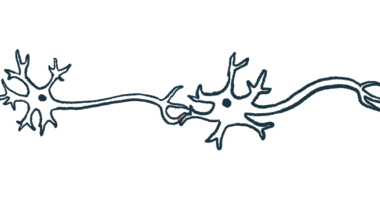Cure SMA Grants University Researcher $75,000 for Project on Motor Neuron Susceptibility

As part of a $1.03 million basic research funding initiative, Cure SMA has awarded a $75,000 grant to University of Missouri researcher Chris Lorson, PhD, for his investigation into the role of astrocytes, a specific type of brain cells, in lower motor neuron susceptibility in spinal muscular atrophy (SMA).
SMA is caused by mutations in the survival motor neuron 1 (SMN1) gene. This gene is expressed in every cell in the body, but not all cell types or neurons become “sick” when SMN levels drop.
Titled “Examining the role of astrocytes and the influence upon lower motor neuron susceptibility in SMA,” the project aims to understand why some neurons get sick and others don’t.
Specifically, Lorson will investigate the role of astrocytes (star-shaped cells known to support motor neurons in the brain and spinal cord) in different regions of the central nervous system (CNS) regions. The objective is to identify new factors that could potentially protect some neurons and why they indeed protect some neurons and not others.
The project is designed to investigate why lower motor neurons are particularly impacted in SMA. Understanding why these cells are targeted could not only advance our biological knowledge as well as support the development of new drugs for SMA.
Lorson and his team have been working on the development of a potent antisense oligonucleotide that can extend survival of SMA mice. They are also examining non-SMN modifiers of disease and collaborating with other labs to develop new drugs for SMA.
In a news story, Lorson tells how he began working in the field of SMA in 1997 as a postdoctoral fellow in Dr. Elliot Androphy’s lab at Tufts Medical School. While at Androphy’s lab, Lorson discovered a significant interaction between a viral protein and the SMN protein. He then began focusing on the splicing of the SMN1 and SMN2 genes, identifying important regulatory regions. Splicing is a modification that allows for a single gene to code for multiple proteins.
Lorson first attended a Cure SMA meeting in 1998, in Philadelphia, and has been working in the field ever since. He has been with the University of Missouri since 2002.
Earlier this month, Cure SMA announced it has expanded the current round of basic research funding to $1.03 million this year. Lorson’s grant is a reflection of this initiative.
The investment follows growing support from families, researchers, pharmaceutical companies and regulatory partners as part of a strategic research plan aimed at advancing SMA research into its next stage by investigating SMA’s causes and biology, and ultimately finding a cure.







